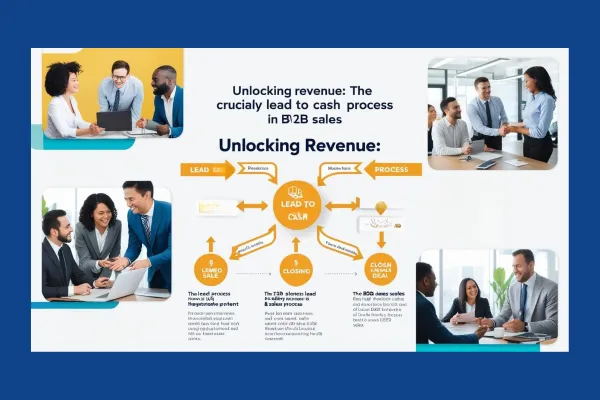
Unlocking Revenue: The Crucial Role of the Lead to Cash Process in B2B Sales
When it comes to running a successful business, especially one that focuses on the B2B sector, having streamlined processes is absolutely critical. Among these essential processes is the lead-to-cash process which can essentially make or break any organization's success in the long run. This important and often overlooked process involves sales teams bringing leads into customers, managing customer relationships across departments as well as ensuring efficient payment transactions while ensuring proper invoicing procedures are followed through with accuracy and speed. In this blog post, we will explore how crucial lead-to-cash automation can be and discuss different tools that businesses may need for optimizing their performance throughout this vital undertaking.
The lead-to-cash process is an important part of the B2B world, as it helps businesses find and develop valuable customer relationships. This process involves many steps, such as lead generation, qualification, sales engagement, negotiation, closing the sale and fulfillment. With a well-crafted lead-to-cash process in place, businesses can maximize their chances of success and more confidently convert leads into customers.
In order to streamline the lead-to-cash process and make it as efficient as possible, businesses often use a variety of tools such as Customer Relationship Management (CRM), Configure Price Quote (CPQ), Contract Lifecycle Management (CLM), and billing automation. CRM helps companies to better manage their interactions with customers and potential customers alike, by tracking customer data, analyzing customer behaviour, and understanding customers' needs and preferences. CPQ automates pricing configurations, quotes, and orders, making the entire process easier for both the buyer and seller. CLM helps businesses of all sizes manage their contracts effectively by providing accurate visibility into various contractual elements at any given time. Billing automation can save days or weeks of tedious manual effort because it takes over the processes that would otherwise rest on individual employees' shoulders. These are just some of the tools that businesses can use to ensure a smooth lead-to-cash operation in an ever-competitive B2B world.
In recent times, many companies have relied on automation solutions to streamline their lead-to-cash process. While this has the potential to improve overall efficiency, it also comes with challenges that must be addressed. One of the main challenges is scalability: automation solutions require significant infrastructure changes, so businesses need to choose a tool that can handle future demands as well. Secondly, companies need to select the right tool for their business size and type - one size does not fit all! Additionally, finding the right implementation partner is paramount for an efficient rollout and minimizing associated risks. Finally, cost is an important factor when choosing between various automation solutions; companies should consider not just initial investment costs but also those associated with ongoing maintenance and updates.
To conclude, the lead-to-cash process is an integral part of the B2B sales cycle, and businesses are continuously striving to optimize the process. From defining the criteria for qualified leads and leveraging automation together with analytics to ensure better decision-making, there are plenty of best practices that can be implemented in order to ensure smoother and more efficient management of leads. Additionally, utilizing automation solutions also has immense advantages with regards to improving response times through standardization and efficient allocation of tasks as well as reducing human effort during manual operations. Despite these advantages, companies must also be cautious while implementing these tools and take into account long-term considerations such as formulating new structures for system scalability and uninterrupted availability when integrating automated solutions into their existing systems.
Thank you for reading this newsletter. I hope you found this email informative and useful. I will see you at the next one!
Cheers,
Anand
